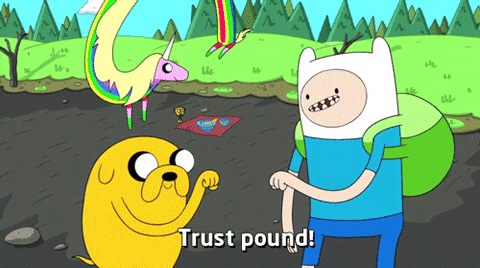Are you part of a marketing team looking to maximize your next freelancer collaboration?
Then you have come to the right place!
In this post, we are going to look at five ways you can build a long-lasting, trusting relationship with the next freelancer you hire.
Let’s get started:

Manage all your social media accounts in one place.
Craft, schedule, & auto-post content to all your social channels, then track analytics and manage interactions from a single, easy-to-use dashboard.
1. Develop A Strategy For Vetting Your Partnership

Collaboration is a two-way street.
The freelancer needs to meet the needs of your project, but your project also needs to meet the needs (and expertise) of the freelancer.
Before you begin working together, it can be beneficial to establish a system where you test to see:
- If the freelancer is a good fit for your project
- If your project is a good fit for the freelancer
Ideally, this test will replicate the working conditions of your project. You will be able to get a good feel for the freelancer, and they for you.
For example:
Let’s say you are looking to hire a graphic designer to create digital assets for an upcoming content marketing campaign.
You would like a freelancer who:
- Creates high-quality work
- Communicates well
- Sticks to deadlines
- Understands the target audience
- Can adhere to brand guidelines
To test this, you could devise a short, deadline-based, paid task where they:
- Turn a blog post into a social media graphic
- Create header images for posts
- Design a logo for your podcast
You can then benchmark the working progress and outcome of this task against your most important criteria.

Also:
It is important to remember that this test is about more than just allowing the freelancer to showcase their skills.
It is also a way to test your team’s communication skills. So, be open to feedback and insight from the freelancer you are trialing to see how you can improve.
2. Create A Clear And Detailed Project Agreement

Freelancer collaboration relies on the sharing of information. The more informed both sides are, the smoother and more effective the project.
Your marketing team should create a detailed project brief outlining the needs of the project. This should be communicated clearly and comprehensively.
For example, there is a noticeable difference between:
“The freelancer will edit and prepare branded podcast episodes.”
And:
“The freelancer will edit Loomly’s monthly branded podcast episodes, using the audio branding materials provided, to create 30-minute-long episodes that focus on key branding takeaways. The editing process should involve the removal of adult language, off-topic comments, and any elements that may conflict with the company’s brand guidelines.”
This is a slightly oversimplified example, but you can see what we are trying to illustrate. Depth and precision can remove doubt and conflict from the project. (More on that in the next section.)
Likewise:
The freelancer should create an in-depth summary of how they work, the support they need, and any other relevant information.
For example, a freelance audio engineer may provide information such as:
- All episodes will be exported in .mp4 format
- I will share podcast episodes on my personal channels
- I will not create graphics for episodes
If possible, this information will be presented as an agreement that both parties will sign, with the opportunity to make amendments after some time has passed.
3. Set Expectations Early In The Process

Expectations are a common point of conflict in freelancer collaboration.
Specifically:
- Marketing teams dislike it when a freelancer does not meet expectations
- Freelancers dislike it when they are expected to do work they were not aware of
Let’s say you have hired a freelance writer to create content for your blog.
Your agreement states:
- The writer will create a minimum of 1,250 words of content
- The writer will provide keyword research
- The writer will deliver the post within 10 days of receiving the brief
These terms form the basis of your agreement. But, it is not uncommon for marketing teams to have expectations beyond this, such as:
- They might expect the writer to upload the post to WordPress
- They might expect the writer to provide digital assets
- They might expect the writer to deliver the post in markdown
If the freelancer is not aware of these expectations, they will not deliver on them. They may not have included them in their agreement because they are not part of their service.
The marketing team would feel disappointed that expectations have not been met; the freelancer would feel frustrated they are expected to do a task they did not agree to.
Thankfully, this conflict is easily avoidable.
To do this, marketing teams and freelancers must:
- Discuss all aspects of the work
- Share any expectations they feel are non-negotiable
- Ask the question, “what is important to this project that was not mentioned in the brief?”
If this is your first freelancer collaboration, it can be that these misaligned expectations only arise once the project is underway. You can not always account for everything!
In that case, it is important to have a clear channel of communication where this can be discussed and communicated clearly.
This brings us squarely to the next section:
4. Establish Clear Channels Of Communication

The underlying factor in each of these sections is communication; it is key to a successful freelancer collaboration.
Partnerships are at their strongest when communication is:
- Open
- Honest
- Relevant
As such, there are two components you need to establish.
The first component is a forum where you can discuss the current project, a space where the freelancer has a direct line to relevant members of the marketing team and vice versa.
The chosen forum should allow for the easy sharing of:
- Updates
- Ideas
- Feedback
- Thoughts
- Opinions
If you are unsure of what you should use here, we recommend you take a look at our list of 11 tools that can benefit your marketing team.
The second component is a process for reviewing communication. This is where your marketing team and the freelancer can both ask questions like:
- Are we communicating ideas effectively?
- Are there any tools we could use to improve?
- Are we catering to the other party’s needs?
The feedback you receive can shape the next phase of your collaboration and promote continuous improvement.
Ideally:
These will both be places where the marketing team and the freelancer can speak freely.
This does not need to be a no-consequence zone — it is a professional relationship, after all! — but sharing honest thoughts and healthy conflict should be promoted.
5. Trust Each Other

Freelance collaboration can be scary.
It is normal to worry about handing over important parts of your project to a freelancer; your work is an extension of you, and you want it to be treated right.
But it is important that you trust your freelancer’s abilities: allow them to delight you with their work.

Many people operate as freelancers because they:
- Excel at their chosen skill
- Have found a way to work effectively
- Can keep to deadlines
- Can produce high-quality work
Your project has just become their project. You are working with a professional who wants to submit work that you will love.
This means you need to give them the time and space to complete the work their way. Have faith they will produce the results you want, and rectify any mistakes as they go.
Freelancer Collaboration In A Nutshell
If you want to foster a positive freelancer collaboration, there are five things you need to do:
- Create a vetting process: devise a system to see if you, your freelancer, and your next project are all a good fit for each other.
- Create a clear project brief: share as much information about the project as possible upfront, and have the freelancer detail how they operate.
- Set expectations early: avoid unhealthy conflict by managing expectations and sharing non-negotiable elements of the project ahead of time.
- Create a clear channel of communication: have a forum for thoughts and ideas to be shared; review the communication process regularly and listen to feedback.
- Trust each other: you both want the best for this project, so give you freelancer the time and space they need to create the work effectively.



